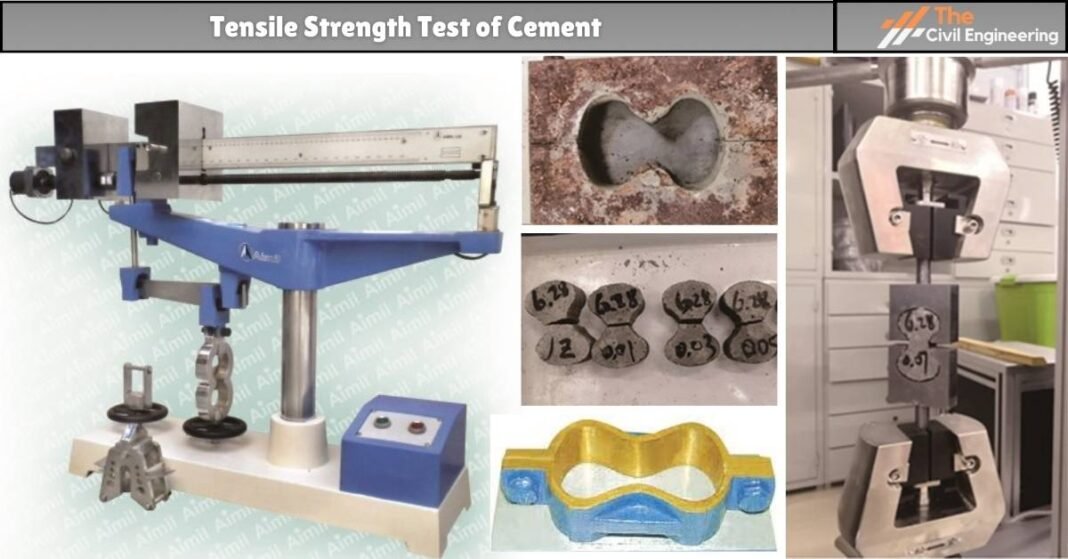The Tensile Strength Test of Cement is utilized to have an indirect indication of the compressive strength of cement. It is at present normally utilized for the rapid hardening of the cement.
1. Tensile Strength Test of Cement
a. Objective
The aim of this test is to determine the tensile strength of the cement.
b. Apparatus Required
a. Standard briquette mold
b. Cement
c. Water
d. Sand

c. Procedure
This test is conducted as follows:
a. The tensile strength test is carried out by fracturing six briquettes made of cement mortar in the ratio of 1:3 using standard sand and test cement.
b. An average of six results is treated as the tensile strength of cement.
c. The percentage of water by weight of cement required to make the cement mortar is given by the relation (P/5+2.5), where,
P is the percentage of water required to make cement paste of normal consistency.
d. Cement mortar prepared in this way is filled in the standard briquette mold and cured for 24 hours at a temperature of 25-29°C and relative humidity of 90%.
e. The test is carried out for 3 days, 7 days, and 28 days. During the test, the load is to be applied uniformly at the rate of 35 kg/cm² or 3.50 N/mm².
f. The tensile stress at the end of 3 days should not be below 20 kg/cm² or 2 N/mm² and at the end of 7 days should not be below 25 kg/cm² or 2.50 N/mm², 28 days should not be below 45 kg/cm² or 4.50 N/mm².
d. Precautions
1. Cement mortar should be prepared in a suitable proportion.
2. Standard Briquette Mold should be cleaned properly.
3. Use gloves and an apron while preparing Cement mortar.
2. Advantages
The advantages of the tensile strength of the cement are as follows:
1. It helps us to determine the tensile strength of the Cement.
2. It helps to know for which structure, cement can be used or not.
3. References1. Content Filter & Authenticity Checking Team, The Civil Engineering (Our team checks every content & detail to maintain quality.) |
Read More: Water Absorption Test of Aggregate

